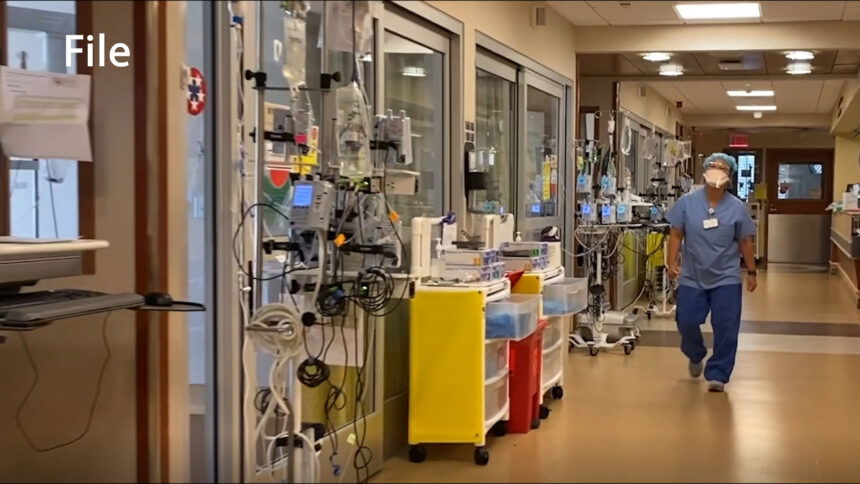72% of Eisenhower Health’s 367 beds are full, official says

As coronavirus hospitalization continue to hit record levels in Riverside County, Eisenhower Health in Rancho Mirage is facing a possible staffing shortage as the medical center braces for its annual holiday season surge of patients, its chief medical officer said today.
"I think we are as prepared as we can be," Dr. Alan Williamson told City News Service. "It's still going to be daunting, because the timing of this really couldn't be worse.''
The hospital -- one of three in the Coachella Valley -- is preparing for its busiest time of year. The annual influx during the winter months typically means an increase of 30 to 40% more patients, Williamson said.
Riverside County on Sunday set a hospitalization record of 573 COVID- 19 patients, and the numbers have continued to rise, reaching 649 on Thursday.
Prior to this week, the previous record high of coronavirus hospitalizations was 550, set in July when the first "surge" was documented, according to the Riverside University Health System.
According to Williamson, there are still patient beds available at Eisenhower. As of Thursday, 72% of Eisenhower Health's 367 beds were full -- including regular beds, intensive care unit beds and COVID-specific beds.
Hospital staff were treating 50 COVID-positive patients, a figure that includes six patients in intensive care units. ICU beds were 62% full, the hospital reported.
Williamson said coronavirus hospitalizations had been running relatively steady until 3 1/2 weeks ago. During the six to eight weeks before that, the hospital saw between 12 and 15 daily COVID-positive patients. With the latest uptick, the hospital's oronavirus numbers are now at about 60% of what the hospital experienced in July, when about 90 patients sought treatment.
"Even though our numbers today certainly look better than they did in July, they are worrisome because they are about three times higher that they were only a few weeks ago,'' Williamson said.
The hospital's 57-bed coronavirus wing was 75% full as of Thursday, although officials reiterated the hospital could accommodate more beds if needed.
But Williamson warned that the holiday season may complicate matters. Hospital officials are bracing for an influx of infections tied to the Thanksgiving holiday, with additional impacts forecast from Hanukkah, Christmas and New Years.
"We're very concerned that two to three weeks after Thanksgiving we will start seeing significant increases in the number of patients, and then typically two weeks after that, a significant rise in the number of patients being hospitalized with COVID, and typically two weeks after that, a significant increase in deaths," he said.
Williamson also said the hospital faces new challenges compared to the summer surge. Back then, personal protective equipment was on the top of everybody's mind. Today, he said, he's worried about staffing levels.
"It's one thing to have 367 beds that we can operate in the hospital, but we have to be able to provide nurses, therapists, nursing assistants and so on, for all those beds,'' he said.
In July, the federal government dispatched a roughly 20-person team of doctors, physician assistants, critical care nurses, respiratory technicians, and others to assist the overwhelmed hospital.
The team has since departed, leaving Eisenhower and other area hospitals struggling to find staff.
Williamson, however, offered a glimmer of good news -- hospital staff have continued to learn how to treat virus-related complications, resulting in a reduction in the percentage of patients who typically transfer to ICU units.
"We've been learning every day since day one of the pandemic on how to manage these patients medically," he said. "One trend we've definitely been seeing is that we're not having as many patients having to go to the intensive care unit.
"We've gotten better at really intervening aggressively and early to provide a number of therapies to stabilize the patients in an intermediate care setting rather than having to go to the intensive care unit as often,'' he added.
With fewer patients transferring to intensive care units, fewer ventilators and other crucial resources are being used, he said.




